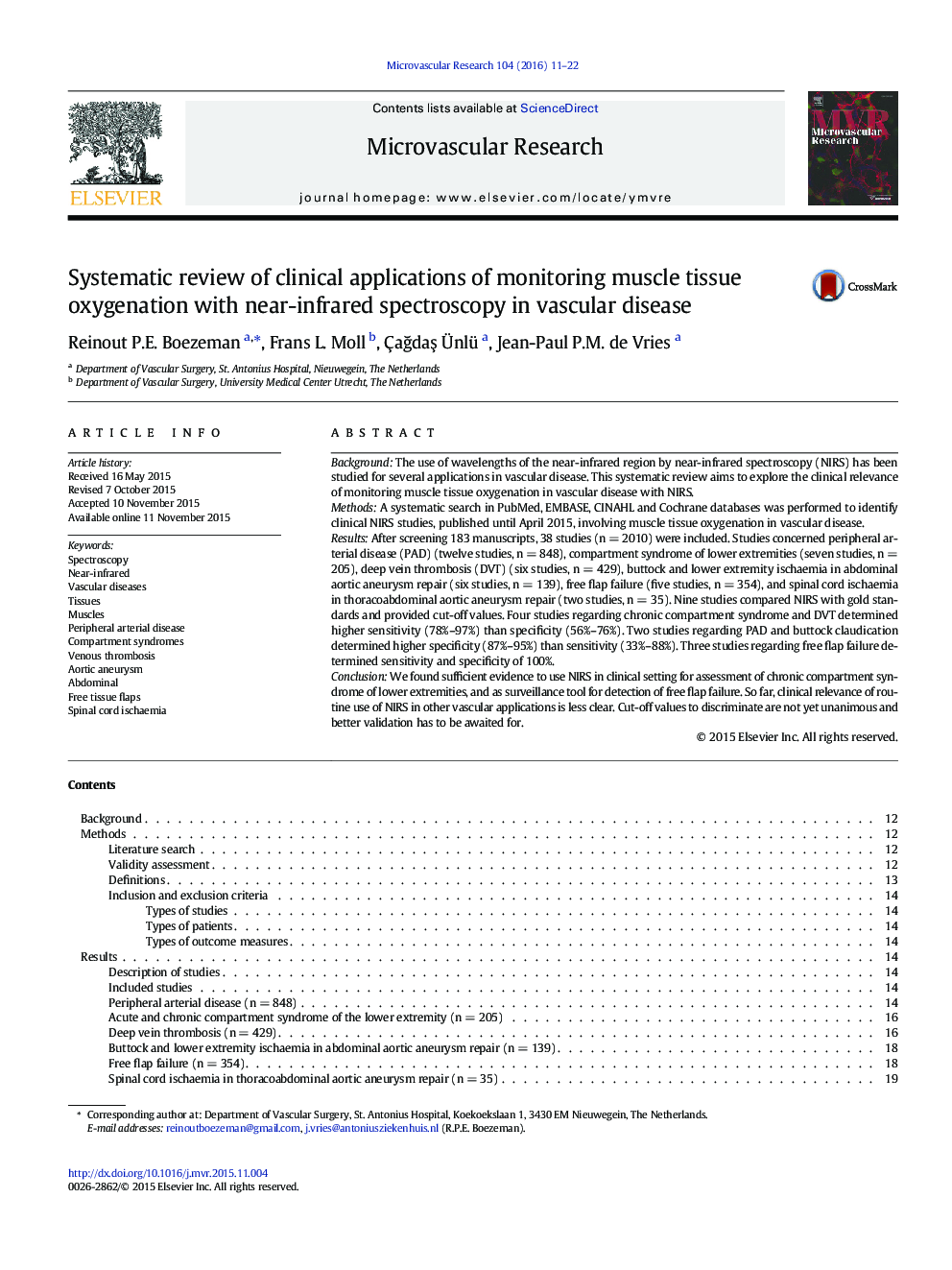| Article ID | Journal | Published Year | Pages | File Type |
|---|---|---|---|---|
| 1994719 | Microvascular Research | 2016 | 12 Pages |
•We explored the clinical relevance of NIRS monitoring of muscles in vascular disease.•NIRS can be used for assessment of chronic compartment syndrome of lower extremities.•NIRS can be used as surveillance tool for detection of free flap failure.
BackgroundThe use of wavelengths of the near-infrared region by near-infrared spectroscopy (NIRS) has been studied for several applications in vascular disease. This systematic review aims to explore the clinical relevance of monitoring muscle tissue oxygenation in vascular disease with NIRS.MethodsA systematic search in PubMed, EMBASE, CINAHL and Cochrane databases was performed to identify clinical NIRS studies, published until April 2015, involving muscle tissue oxygenation in vascular disease.ResultsAfter screening 183 manuscripts, 38 studies (n = 2010) were included. Studies concerned peripheral arterial disease (PAD) (twelve studies, n = 848), compartment syndrome of lower extremities (seven studies, n = 205), deep vein thrombosis (DVT) (six studies, n = 429), buttock and lower extremity ischaemia in abdominal aortic aneurysm repair (six studies, n = 139), free flap failure (five studies, n = 354), and spinal cord ischaemia in thoracoabdominal aortic aneurysm repair (two studies, n = 35). Nine studies compared NIRS with gold standards and provided cut-off values. Four studies regarding chronic compartment syndrome and DVT determined higher sensitivity (78%–97%) than specificity (56%–76%). Two studies regarding PAD and buttock claudication determined higher specificity (87%–95%) than sensitivity (33%–88%). Three studies regarding free flap failure determined sensitivity and specificity of 100%.ConclusionWe found sufficient evidence to use NIRS in clinical setting for assessment of chronic compartment syndrome of lower extremities, and as surveillance tool for detection of free flap failure. So far, clinical relevance of routine use of NIRS in other vascular applications is less clear. Cut-off values to discriminate are not yet unanimous and better validation has to be awaited for.
